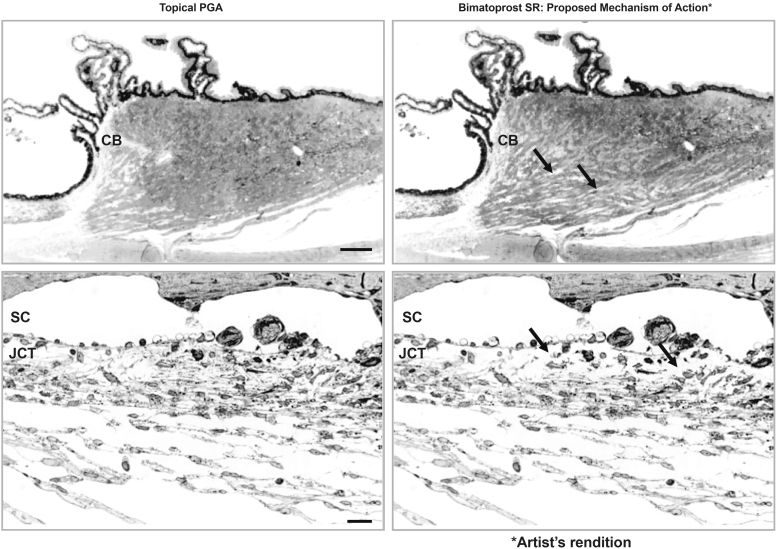FIG. 12.
Proposed mechanism for the extended duration of effect of the bimatoprost implant. (Left) The mechanism of IOP lowering with topical PGAs involves remodeling of outflow pathways, seen here in the monkey ciliary body after 1 year of topical bimatoprost treatment (top) and in the monkey TM after 1 year of topical latanoprost treatment (bottom). (Right) Artist's rendition of the hypothesized mechanism for sustained IOP lowering with the implant. The high tissue concentrations of bimatoprost after implant administration are proposed to result in higher expression of MMPs and a shift in the MMP/TIMP balance favoring reduction in the ECM and more durable tissue remodeling, resulting in a sustained increase in aqueous outflow and a longer duration of IOP reduction. Images on left are used with permission of ARVO, from Morphological Changes in the Anterior Eye Segment after Long-Term Treatment with Different Receptor Selective Prostaglandin Agonists and a Prostamide, Richter et al.76; permission conveyed through Copyright Clearance Center, Inc., Arrows indicate increased areas with empty space because of ECM degradation. Scale bar: (top) 50 μm; (bottom) 20 μm. CM, ciliary body; JCT, juxtacanalicular tissue.

